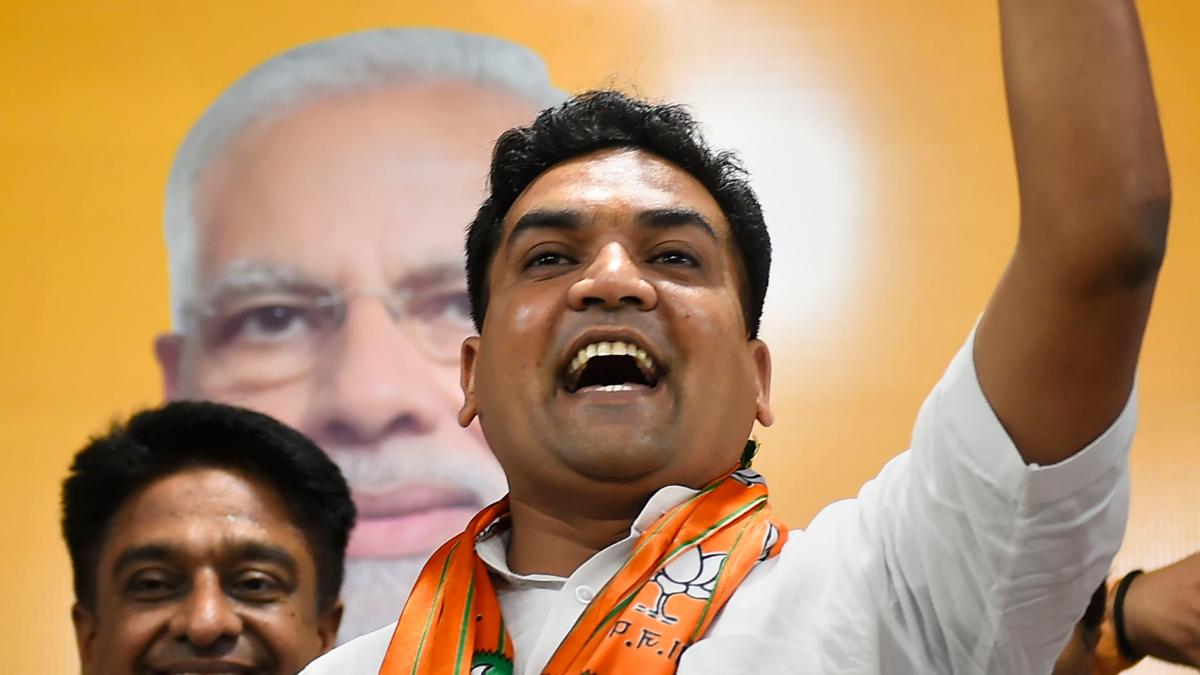Michelle O’Neill exuded confidence and composure as she descended the marble staircase in the Northern Ireland Parliament building on Saturday. Though her gaze remained serious, her brief smile belied the intensity of the moment as cheers from the crowd burst forth.
The decades-long, brutal struggle of Irish nationalists in the region, who aspired to reunite with the Republic of Ireland and reverse the 1921 partition that has kept Northern Ireland under British rule, shaped the political party she represents, Sinn Fein.
Now that a power-sharing government has been restored, Sinn Fein has its first political officeholder in Northern Ireland. This is historic for both the party and the wider region. Historically, the position of first minister has always been occupied by a unionist politician who is adamant about staying in the United Kingdom.
“As first minister, I am wholeheartedly committed to continuing the work of reconciliation between all our people,” Ms. O’Neill said, noting that her parents and grandparents would never have imagined that such a day would come. “I would never ask anyone to move on, but what I can ask is for us to move forward.”
To be sure, it was unimaginable a generation ago to have a nationalist first minister in Northern Ireland, much less one from Sinn Fein, a party with close ties to the Irish Republican Army. Sinn Fein’s story, however, is not just about how the political landscape changed after the Troubles ended in 1998 with the Good Friday Agreement, but also about how the party went from being a fringe force that was once the political wing of the I.R.A. to a political force that won the most seats in Northern Ireland’s 2022 elections.
“It’s certainly symbolically very significant,” said Katy Hayward, a professor of political sociology at Queen’s University, Belfast. “It tells us just quite how far Northern Ireland has come, and in many ways the success of the Good Friday agreement and use of democratic and peaceful means of achieving cooperation.”
The implications of having a Sinn Fein first minister for the aspirations of those seeking the island’s reunification following a century of division are still unknown. Though Sinn Fein’s president, Mary Lou McDonald, who leads the opposition in the Irish Parliament, stated this past week that a united Ireland was now “touching distance,” experts think it is still a long way off.
The Democratic Unionists, the main unionist party in Northern Ireland, left the government in 2022 as a result of Britain’s withdrawal from the European Union, which had created a trade border separating Northern Ireland from the rest of the United Kingdom. Fearing that the sea border would be the first step toward severing their ties to Britain, the D.U.P. wanted to protect those connections.

“People like to say here, one can’t order paper clips without the approval of the other,” Ms. Hayward said. But the titles, and the fact that the first minister’s role reflects the largest number of seats, creates a “first among equals” notion.
Experts noted that while a rising Sinn Fein could give that cause more impetus, the party’s ascent more closely reflected the divisions that emerged among unionist parties following Britain’s exit from the EU than it did a general upsurge in Irish nationalism. According to recent polls, the majority of people on the island are against unification.
“They’ve made the prospect look realistic, and Brexit helped, because support has increased somewhat,” said Jonathan Tonge, a professor of politics at the University of Liverpool who specializes in Northern Ireland, and who has extensively analyzed polling on the issue.
“It’s still got a distance to run,” he said, adding that with an election looming in the Republic of Ireland in 2025, and the potential for a Sinn Fein government there, “it’s huge in those terms.”
Few people could have predicted a Sinn Fein first minister a century ago, he said.

The fact that Ms. O’Neill and Ms. McDonald have worked to alter people’s opinions of the party has contributed to some of its success.


















